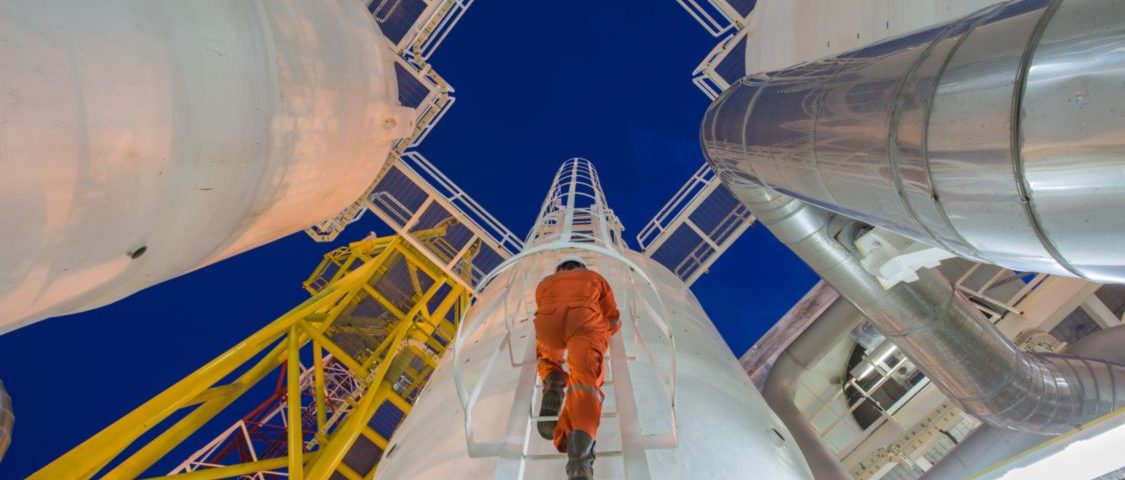Improper selection of material is one of the leading causes of failure in pressure vessel. As a result, choosing the appropriate metal for a specific tank application is of the utmost importance. Choosing the wrong material can lead to any number of issues, from poor performance and lower efficiency, to catastrophic failure and reduced safety.
The National Board of Boilers and Pressure Vessels Inspectors mandates that a material test report be provided when ordering any tank. This, however, is not enough to prevent errors in the certification procedure and incorrect ordering of pressure vessel materials is still commonplace.
So which material is ideally suited for your pressure vessel application? Read on to find out.
Carbon Steel – Carbon steel provides a number of advantages as a pressure vessel material. In addition to being highly resistant to corrosion, shock, and vibration, it possesses a high tensile strength — making it ideal for demanding tank applications in a wide range of industrial processes. It also retains strength at minimal thicknesses, which reduces the amount of material needed for tank fabrication, thereby lowering fabrication costs. Carbon steel is also highly recyclable and accounts for more recycled weight annually than aluminum, plastic, paper, and glass combined. In fact, approximately 50% of its production comes from reclaimed materials.
Stainless Steel – Like carbon steel, stainless steel offers high strength at low thickness. Also like carbon steel, it is highly recyclable. There are a number of different types of stainless steel. Type 304, for instance, is widely known for its superior chemical and corrosion resistance. Type 304L, on the other hand, has low carbon content and exhibits excellent weldability. Choosing the correct type of stainless steel will ultimately depend on the unique requirements of the application that the pressure vessel is being used in. In general, however, it is ideal for tanks and vessels that are exposed to the natural environment (humidity, sunlight, etc.) or high temperatures.
Hastelloy – Hastelloy pressure vessels are widely used for chemical, petrochemical, and oil and gas applications. With proper maintenance, they can last for decades, creating great cost-efficiency over their entire lifecycle. Their inherent reliability also reduces maintenance-related downtime.
Hastelloy is extremely resistant to corrosive liquids and provides protection against both localized and uniform attack. It is also very durable and resistant to cracking. Moreover, it is extremely workable (easy to weld or fabricate) and is available in a wide range of types (B2, S, C, C276, etc.), which makes it suitable for a broad range of tank applications and industries.
Nickel Alloy – Nickel alloy comes in a variety of grades. For instance, chromium can be added to nickel alloy to provide more heat resistance. Copper can also be added for use in salt-water environments. Perhaps the most notable use of nickel alloy tanks is in Liquefied Natural Gas (LNG) applications.
It’s important to note that the manufacturing process for this alloy can be more complex than with other amalgams. During tank fabrication, only the purest materials should be used in order to ensure its integrity. Despite this complexity and associated cost, nickel alloy has plenty to offer as a pressure vessel material – providing excellent corrosion resistance, as well as protection against thermal expansion.
Aluminum – Aluminum is often considered as an alternative to stainless steel for many pressure vessel applications. It is roughly three times less dense than stainless steel and can maintain high tensile strength with certain heat treatments and alloy compositions. One of the most significant advantages of aluminum is that it is cheaper and much easier to machine than stainless steel. In many instances, however, labor costs may be higher, as some aluminum tank fabrication requires the use of special welding techniques. Because of its lower density, aluminum is typically not suitable for pressure vessels that are exposed to extremely high pressures.
Titanium – Like copper nickel alloys, titanium provides a number of advantages in salt-water environments and its inherent resistance to corrosion reduces cleaning and maintenance requirements. It maintains strength and rigidity even at lower thicknesses and facilitates more efficient heat-transfer than many other types of metal as well. Titanium is also known for its ability to maintain its structural properties over long periods of time. It is widely used in power station condensers and similar applications.
Making the Right Choice
In summary, each metal provides its own unique benefits and limitations. As a result, the choice of which material to use for a pressure vessel will largely come down to the specific needs of the intended application. Engaging with a reputable manufacturer is critical to making this decision, especially given the fact that failure of a pressurized vessel creates can create a significant hazard that often results in more downtime, higher costs, and most importantly, reduced safety.
Honiron is an industry-leading designer and manufacturer of processing equipment, including heat exchangers, condensers, strippers, evaporators, and extractors. For more information or to speak with one of our qualified experts, contact us today.
